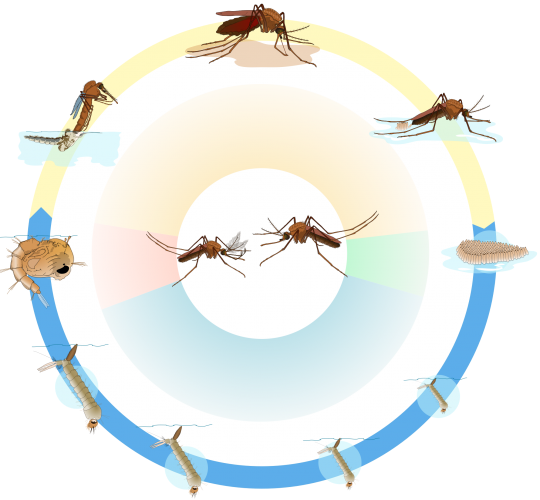The Mosquito Life Cycle

Eggs
Female mosquitoes deposit eggs singly or in rafts on or near standing water. These eggs are very small, and hatch within a few days. Check out this very cool KQED video showing mosquitoes laying eggs.

Larvae
Mosquito larvae emerge from mosquito eggs. They float near the water surface where they can breathe, but may move in a wriggling motion when disturbed. Mosquito larvae feed on microorganisms and other debris in water.
Pupae
Mosquito pupae form a protective shell in which they transform from a larvae into a winged adult. During this time they do not feed. They float near the surface of the water, but may move in a tumbling motion when disturbed.
Adults
After emergence, the adult mosquitoes briefly rest on the water surface before taking flight. Female mosquitoes need to take a blood meal in order to produce eggs. They will seek out a host by sensing body heat, body scent, and exhaled carbon dioxide. Only female mosquitoes bite; male mosquitoes feed only on plant nectar.
Page last reviewed: August 30, 2023
